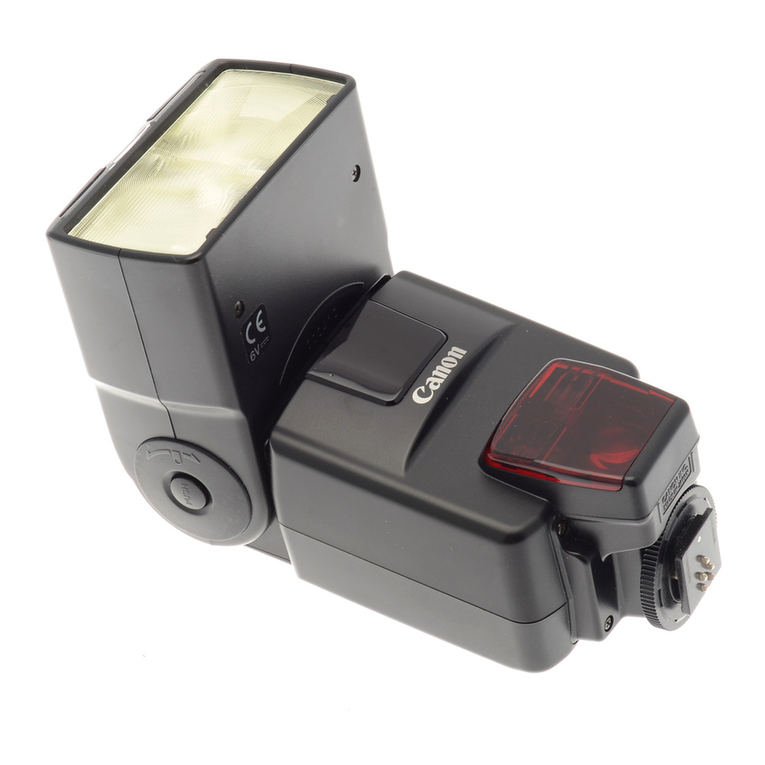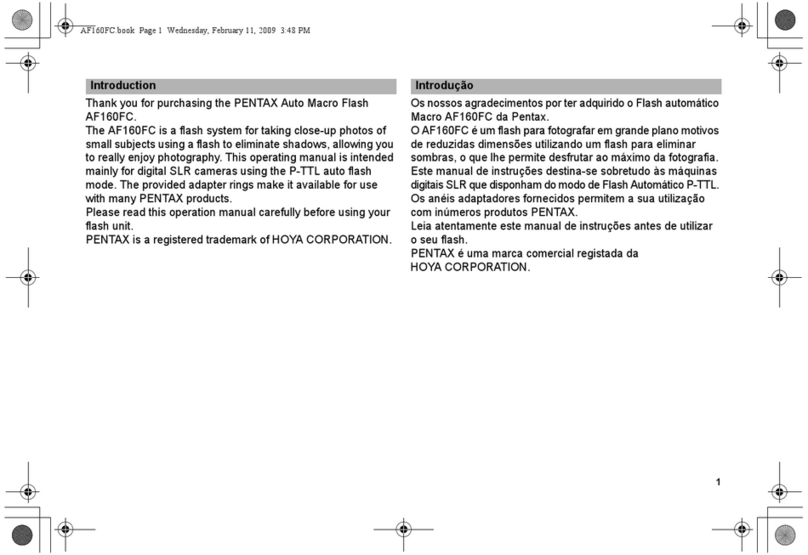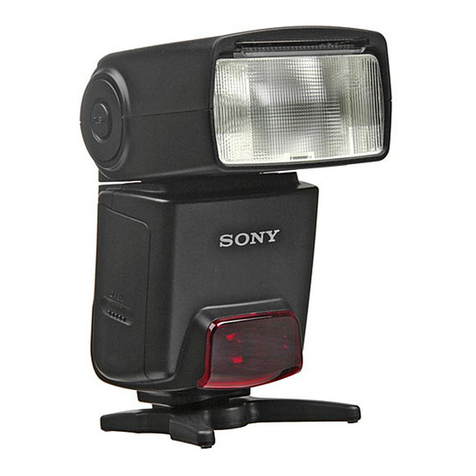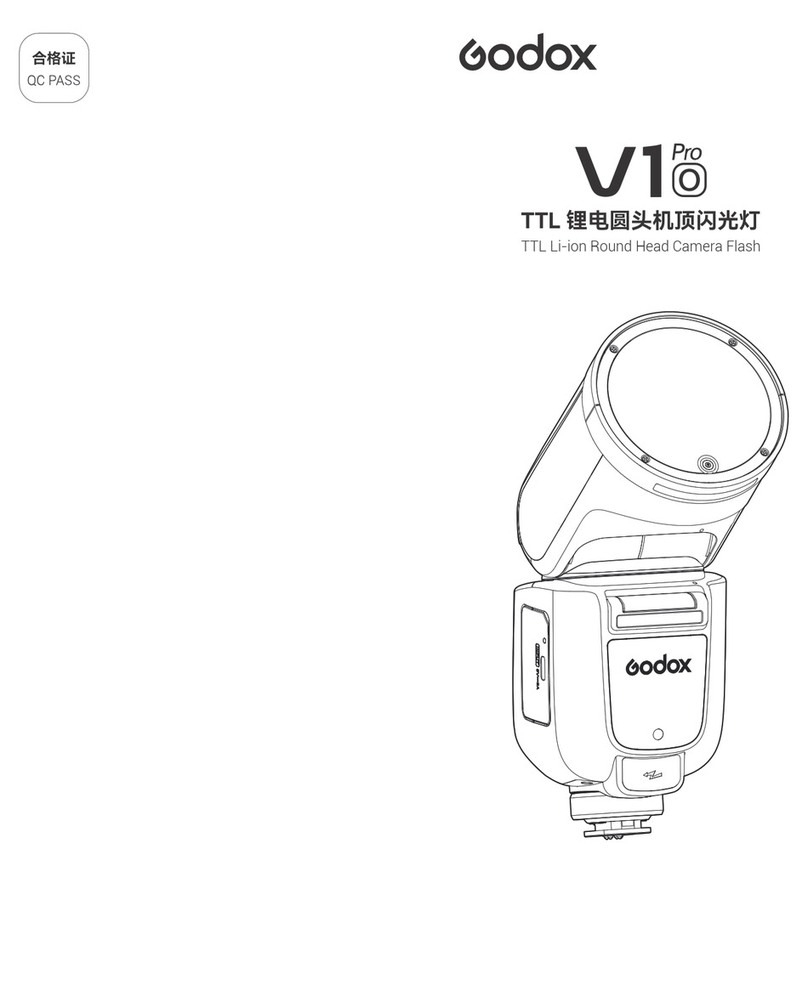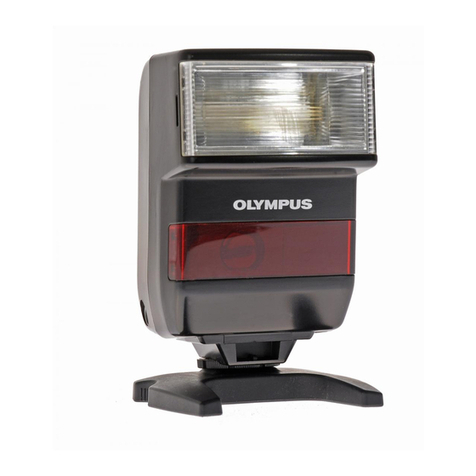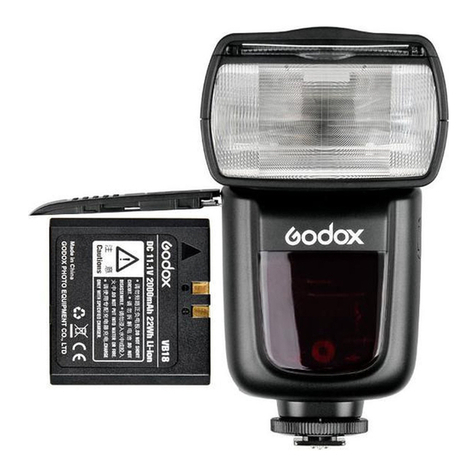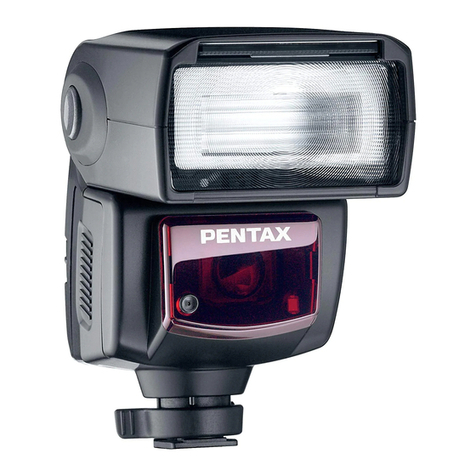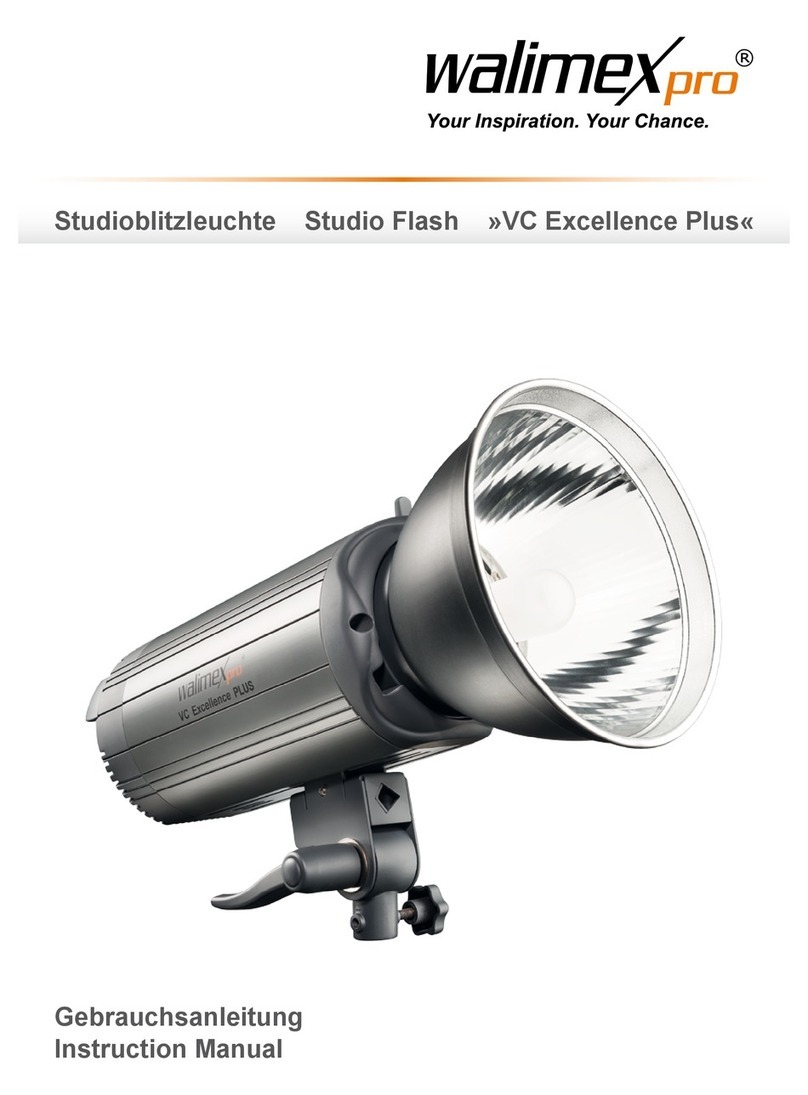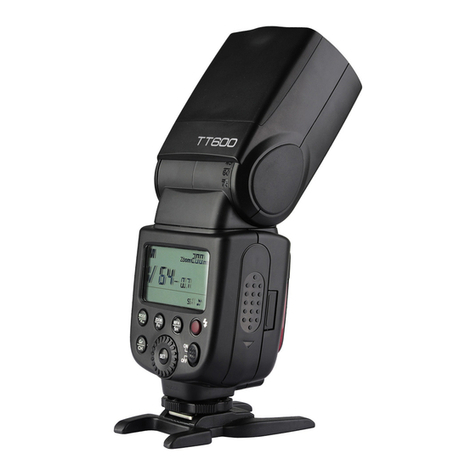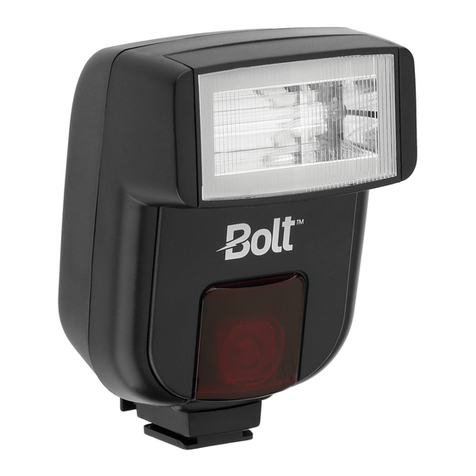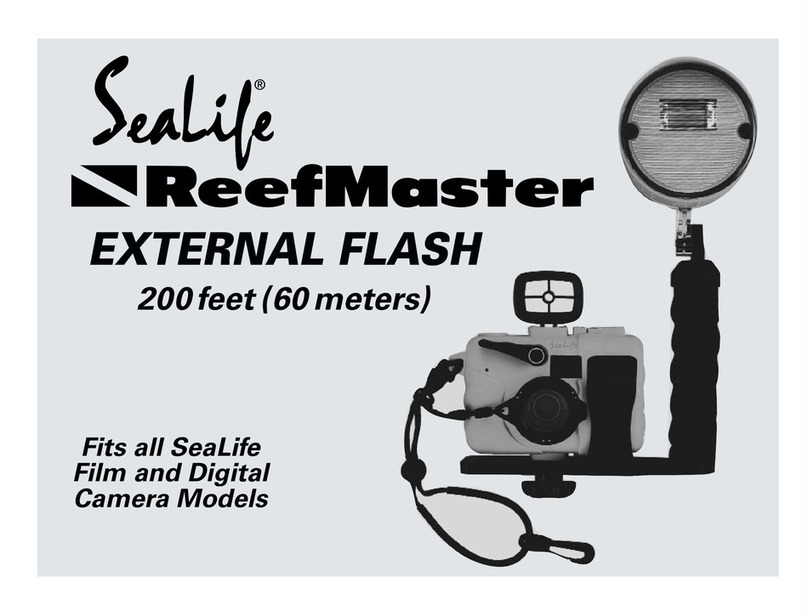Paul C. Buff Einstein E640 User manual

Every decade or two, a quantum leap occurs in ideas and technology that sets the stage
for years to come. While most are content to follow the leader and add a feature or two, a
few innovators take the lead with revolutionary advancements that redene the future state
of the art. Paul C. Buff, Inc.™ has a track record for such innovations, rst in 1986 with the
forerunner of the modern self-contained studio ash – the White Lightning™ Ultra ash unit
- then again in 2001 with the rst full-featured, affordable-yet-professional monolight for the
new masses of young digital photographers – the colorful little light that could, and did – the
AlienBees™ ash unit.
We are now pleased to present the most advanced integrated studio ash system ever
conceived – at any price - with performance and features far beyond any “professional”
monolight. After two years of intense design, evolution, blood, sweat, and tears, welcome to
the brave new future of studio lighting - Einstein™, and the companion Cyber Commander™
extreme integrated wireless control system. Proudly designed and manufactured in America.
EINSTEIN™
The Einstein™ E640 Flash Unit by Paul C. Buff, Inc.™
USER MANUAL / OPERATION INSTRUCTIONS
Paul C. Buff, Inc.™ • www.paulcbuff.com
2725 Bransford Avenue • Nashville, TN • 37204 • USA
Toll Free 1-800-443-5542 • Local 615-383-3982
v.2/2013

[ 2 ] EINSTEIN™ by Paul C. Buff
EINSTEIN™ SAFETY WARNINGS
Paul C. Buff™ Flash Units are designed for professional photographic use. As with all elec-
tronic equipment, users must observe all warnings and safety precautions. Carefully read all
operating instructions and safety instructions before use.
WARNING! HIGH VOLTAGE! Flash units contain high voltages and internal components that can store
dangerous voltages, even when the units are unplugged.
WARNING! Do not leave a ash unit unattended when it is turned on and / or in use. As with all electric
equipment, close supervision is necessary. Do not allow unattended children around this
equipment as potentially dangerous conditions may result. Turn the system OFF and unplug
the power cord when not in use.
WARNING! Do not operate or store a ash unit in or around water. Do not operate the units in wet,
damp or moist conditions, or in environments where water or other liquid could be dropped,
splashed, sprayed or spilled on the unit. High voltage equipment can cause electric shock
when operated in or near water. Your ash unit should only be used in dry, moderate condi-
tions where the equipment is protected from rain, dirt, sand and dust.
WARNING! Do not use any Paul C. Buff, Inc.™ equipment without permission in restricted areas.
WARNING! Do not operate a ash unit on or around ammable materials such as newspaper, carpet,
wood sawdust, gasoline, etc. Keep the unit away from re, ames, and heated surfaces.
WARNING! Do not cover the unit during operation. Air circulation must be permitted. Do not obstruct
ventilation holes by covering the unit while in use or by operating from inside a carrying bag.
WARNING! Do not insert any foreign objects into any ventilation holes. Do not carry or store a ash
unit together with necklaces, hair pins, nails, paper clips, or any other small metal objects.
WARNING! Do not use ungrounded power cords, power outlets or power strips. Paul C. Buff™ Flash
Units may only be connected to 3-wire grounded AC outlets to avoid shock hazard. Do not
connect the unit to an ungrounded outlet or to a two-wire extension cord or adapter that
eliminates the ground prong. Do not use any cords that have been damaged.
WARNING! Paul C. Buff™ ash units contain no user-serviceable parts. Never open, disassemble, or
attempt to repair any components. Only qualied technicians should service the system as
incorrect disassembly can create an electric shock hazard. Fingers and other foreign objects
must never be inserted or dropped inside any of the vents. If the unit has been dropped
or damaged, discontinue use and contact Customer Service. Do not attempt to make any
changes or modications as any modications made, outside of those performed or approved
by Paul C. Buff, Inc.™, may present hazardous conditions and void the warranty. The only
user-replaceable components are the unit’s ashtube and modeling lamp.

Toll Free 1-800-443-5542 HERE TO HELP [ 3 ]
WARNING! Do not use adapters on the power cord to connect to power lines / outlets of incompatible
voltages. This can damage the unit. For use in international locations, see page 21.
WARNING! The faceplate can get very hot during use. While in use, the unit’s faceplate, ashtube(s),
modeling lamp(s) and faceplate accessories (such as reectors, grids and umbrella poles) can get very
hot to the touch, remaining hot even after the unit has been powered down. Heat is intensied when
the unit is used in down-angle positions and/or when used with accessories that trap heat
(such as closed softboxes). Disconnect the unit from its power source and allow ample time
for the equipment to cool down before touching any component or any accessories.
1. Always mount the ash unit on a light stand during use. Before attempting to operate the ash
unit, make sure that it is securely mounted to a light stand. We offer various light stands in
assorted sizes - visit our website to learn more (www.paulcbuff.com). The stand mount is
compatible with most standard light stands having top couplers up to 5/8-inch in size.
2. Remove the shipping cover before use. Remove the front black cover before turning the unit on.
3. Do not touch the ashtube or modeling lamp with your bare hands. When replacing the ashtube
or modeling lamp, never touch a tube or lamp with your bare ngers. Always turn the unit off,
unplug it from its AC power source, allow it to cool, and use a clean cloth or insulating gloves
to remove or replace a tube and/or lamp. Do not allow your nger oils to contact the lamps
as this can cause excess heat buildup and may cause premature ashtube or lamp failure.
4. Only use approved ashtubes and modeling lamps. The Einstein™ unit should only be used with
the original ashtube and modeling lamp or an approved replacement tube or lamp. Please
see our website (www.paulcbuff.com) to nd replacement ashtubes and modeling lamps.
5. Use care when traveling with or transporting your ash unit. Always use the shipping cover
provided to protect the ashtube, modeling lamp, and frosted dome cover. Use appropriate
packaging to protect the unit against bumps and jolts that may damage the components.
6. When not in use, Paul C. Buff™ Flash Units should be stored in moderate climate conditions between
32ºF and 140ºF (0ºC and 40ºC), protected from water, dirt, sand and dust. Modern elec-
trolytic capacitors normally have a long shelf life. However, if there is no charge applied for
long periods of time, they are more likely to have increased leakage current. This means the
capacitors may become warmer than normal until they stabilize, and the charge voltage may
sag more quickly during use, causing the units to recycle more frequently after ring. If you
need to store the unit for long periods of time (one year +), it is a good idea to occasionally
turn the units on at their lowest power setting, and slowly increase the power setting over a
period of 60 to 90 seconds while ring the unit using the TEST button after each increase.
EINSTEIN™ SAFETY INSTRUCTIONS

[ 4 ] EINSTEIN™ by Paul C. Buff
7. Paul C. Buff™ Flash Units are designed for use with Paul C. Buff™ accessories. While other manu-
facturers design ash equipment and accessories that may claim compatibility with Paul C.
Buff™ equipment, each manufacturer denes their own contacts and latching mechanisms
which may or may not be suitable for safe use with Paul C. Buff™ equipment. We cannot
guarantee or offer our warranty when our equipment is used with accessories made by other
manufacturers and cannot accept liability for damages that may be caused as a result.
8. Observe power requirements and use the appropriate power cord. The Einstein™ ash unit requires
a suitable AC power source, but may be used on various power lines worldwide, from 95 to
265 Vac with 50 or 60 Hz outlets. The unit accomodates different line voltages without the
need to change settings or modeling lamp type. For use in North America, the unit arrives
with a 15-foot power cord that has a standard IEC connector on one end and a grounded,
three-pronged male plug on the other. This power cord connects to the ash unit on its back
control panel and is then plugged into a suitable 120 Vac, 50-60 Hz power outlet. To use the
Einstein™ unit in other areas of the world with varying power outlet congurations, you will
simply need an IEC power cord with the correct plug conguration specic to that area. A
suitable cord can be purchased locally, found in electronic and computer stores.
9. When shooting in an environment where a suitable AC power source is not available, we recommend the
exclusive use of our Vagabond™ Portable Power Systems. The Vagabond™ systems are designed
specically for Paul C. Buff™ ash units and power packs, offering a convenient, lightweight,
self-contained portable power source. We currently offer Vagabond™ models in both 120V
and 230V models. Visit our website (www.paulcbuff.com) to learn more.
EINSTEIN™ SAFETY INSTRUCTIONS continued
EINSTEIN™ SPECIFICATIONS
Weight 4 pounds, 3.5 ounces (without power cord)
Dimensions
4.8” H by 4.8” W by 5.7” L (body dimensions without lamps
or mounting hardware); 7” H by 5.4” W by 7.8” L (overall
dimensions with lamps, dome and mounting hardware)
Power
operates from 95 to 265 Vac, 50/60 Hz with no lamp change
or user settings; supplied with 120V U.S. standard IEC
power cord (see page 21 for info on international use)
Flashpower 640 true wattseconds / joules at Full Power (maximum)
2.5 true wattseconds / joules at 1/256 Power (minimum)

Toll Free 1-800-443-5542 HERE TO HELP [ 5 ]
Flash Variability
(informal term)
9 f-stops in precise 1/10f digital steps (Full to 1/256 power);
voltage and IGBT time regulated to <1%; accuracy is +/-
1/10f from Full to 1/128 power, +/- 2/10f at 1/256 power
Recycle
1/10 to 1.7 second recycle at 120 or 240 Vac (may be red
before 100% recycle for speed shooting at reduced power);
switchable audible and visual recycle ready indicators
Modeling Lamp
250 Watt, 120 Vac bayonet-style quartz lamp supplied (no
lamp change needed when operating from 120 or 240 Vac);
proprietary voltage regulation for constant lumen output
over entire input voltage range (lamp cannot reach full
brightness at AC voltages below 115 Vac); model lumens
track ashpower typically within +/- 1/10f over entire range
Flash Duration
1/2000 second t.5 at Full Power; t.1 duration varies from
1/588 to 1/13500 second in Action Mode and 1/588 to
1/8000 second in Constant Color Mode (see page 12 for more)
Color Temperature 5600º K +/- 50º K over entire range in Constant Color Mode;
5600º K to 6300º K in Action Mode (see page 12 for more)
Slave Tripper ash-sensitive slave tripper (enabled or disabled via menu)
Reector / Accessory Mount
quick-release levers on both sides securely hold standard
Paul C. Buff™ / Balcar accessories and allow rotation with
improved gripping and ease of operation
Umbrella Mount top-mounted umbrella tube and clamp mounts umbrella
shafts up to 9mm (0.350”) diameter
Light Stand Mount reversible swivel mount with ratchet handle; mounts on light
stands with top couplers from 1/2” to 5/8”
Thermostatic Fan Cooling
high-velocity fan and ample cooling path directs air through
the electronics and past the lamp and tube for high volume
shooting; multiple overheat and overvoltage sensors
LCD Display backlit, high-res 2.4” color LCD display (320 x 240 pixels)
Camera Sync
1/8” (3.5mm) jack; or res from optional CSXCV Transceiver
/ Cyber Commander™ remote or third-party radio triggers
**The sync circuit is galvanically isolated from the AC line, high
volage circuitry and the control power supply, making it nearly
impossible to damage a camera even if the ash unit fails.**

[ 6 ] EINSTEIN™ by Paul C. Buff
EINSTEIN™ DIAGRAM
1. The FUNCTION button is used to scroll between the individual screens on the LCD display to
select which screen is active for adjustment (each “screen” is a section of the display; all nine
screens are visible at all times). The screen actively selected for adjustment is highlighted in
blue. The unit defaults automatically to the Flash Adjustment Screen.
2. The ADJUST buttons are used to adjust the light’s various settings. Once a screen is high-
lighted for adjustment, the ADJUST buttons are used to raise or lower output (for the ashpower
and modeling lamp) or to scroll through the options for the setting.
3. The LCD Display is a backlit, high resolution, color screen that is divided into nine sections /
screens to display the current status of the various light settings.
4. The Sync Jack (1/8-inch / 3.5mm) is used for hardwired connection of the ash unit to your
camera using the provided ABSC sync cord.
Note:
Inserting a sync cord or dummy plug into the
jack does not disable the slave photo sensor, which is toggled on and off in a control screen.
5. The EASY SET button clears any programming and returns the unit to its default factory set-
tings. See page 8 for more details on EASY SET.
6. The TEST button allows you to test re (ash) the unit.

Toll Free 1-800-443-5542 HERE TO HELP [ 7 ]
7. The Fuse Holder takes a user-replaceable SR5-F type 8A fuse. A backup is provided in the
event of a blown fuse. See page 20 for more details.
8. The POWER button turns the ash unit ON or OFF.
9. The Power Cord Jack is the connection point for the power cord. The unit arrives with a stan-
dard US cord (IEC connector to 3-prong North American plug), but you can use the unit in
countries with different outlet congurations by purchasing a standard IEC power cord with a
suitable plug for your location.
10. The Stand Mount Tightening Knob twists clockwise to secure your light stand’s top coupler
inside the stand mount. Twisting counter-clockwise releases the hold.
11. The Stand Mount accepts any light stand with a top coupler up to 5/8-inch in diameter.
12. The Ratchet Handle allows you to swivel the ash unit up or down, loosening for adjustment
and tightening to hold the desired position.
Note:
Pulling out on the handle allows you to alter its
position in order to make adjustments without hitting the housing.
13. The Quick-Release Levers (two spring-loaded levers, one on each side of the unit) cause the
faceplate holding ngers to contract so that accessories can be added or removed. The ngers
expand to hold accessories securely in place when the levers are released.
14. Four Holding Fingers (one in each corner of the faceplate) are used to securely hold compat-
ible faceplate-mounted accessories in place on the ash unit.
15. The Frosted Pyrex Dome ts over the ashtube and modeling lamp. It equalizes their effective
size and shape for modeling previews and also serves to reduce UV emission.
16. Four Spring Clips hold the frosted pyrex dome in place on the faceplate.
17. The CyberSync™ CSXCV Transceiver (optional, sold separately) drops into the receptacle on
the top side of the unit, allowing the unit to be remotely controlled by the Cyber Commander™
remote control (also sold separately). All of the Einstein™ parameters can be adjusted remotely
with the Cyber Commander™ and Transceiver setup.
18. The Umbrella Tightening Knob is used to hold an umbrella pole in place on the unit. The shaft
accepts umbrella poles up to 3/8-inch in diameter.
19. The Micro SD Card Slot is used for rmware updating. Updates can be downloaded from our
website and installed via a standard Micro SD Card plugged into this slot. See the Einstein™
page on our website (www.paulcbuff.com/e640.php) for rmware updates.

[ 8 ] EINSTEIN™ by Paul C. Buff
INITIAL SETUP
1. Remove the shipping cover. The Einstein™ unit ships with a black shipping cover positioned on
the faceplate over the ashtube, modeling lamp, and frosted dome to protect these items in
transit. This opaque black cover must be removed before use. Any protective packing material
around the frosted dome must also be removed. To remove the cover, slide either of the quick-
release levers to retract the four faceplate ngers holding the cover.
Note:
Do NOT replace the
shipping cover on a hot light. Allow the light to fully cool before installing the shipping cover.
2. Place the ash unit on a light stand. Place the Einstein™ unit on a standard light stand with the
stand’s top coupler placed inside the Einstein™ stand mount. Secure the hold by twisting the
stand mount tightening knob on the Einstein™ unit clockwise. Loosen the ratchet handle to
swivel the ash unit up or down. The handle has a ratchet action: pulling out on the handle
allows you to alter its position in order to make adjustments without hitting the housing.
3. Connect the supplied power cord. Connect the provided power cord into the power cord jack
on the back panel of the ash unit, then plug the cord into a 120 Vac or 240 Vac, 50 or 60 Hz
outlet, or to a Vagabond™ system. The Einstein™ unit will automatically sense the voltage and
frequency. Press the POWER button to turn the unit on.
Note:
When the Einstein™ unit is turned
off, it’s actually in STANDBY mode and can be turned on remotely by a Cyber Commander™
remote if it is tted with a CSXCV CyberSync™ Transceiver (both optional accessories, sold
separately - see page 18 for more details).
4. Begin in EASY SET Mode. The recessed EASY SET button allows instant setup for most users.
Pressing this button clears any special programming and sets the Einstein™ unit to the following
parameters (how the unit is shipped from the factory):
Model Mode = TRACK Flashpower: The modeling lamp tracks the ashpower output
(brightening or dimming automatically as the ashpower is adjusted up or down) for a
“What You See Is What You Get” modeling preview.
Recycle / Ready Indication = BOTH (Audible and Visual Recycle Indication): Recycle indication
is provided by an audible beep and by the modeling lamp dimming during recycle,
then restoring brightness when recycle is complete.
Color / Action = COLOR Mode: The emitted color temperature is held constant at 5600ºK
plus or minus 50ºK at any power setting or input voltage. See page 12 for more details.
Slave Eye Status = ON: The slave eye ash sensor is turned on.
Channel / Frequency: The optional CSXCV CyberSync™ Transceiver, if present, is set to
Frequency 1 and Channel 1. The CSXCV is sold separately, part of the CyberSync™
remote control system - see page 18 for more details.

Toll Free 1-800-443-5542 HERE TO HELP [ 9 ]
5. Sync your camera. With your camera synced to the Einstein™ ash unit, pressing your camera
shutter will trigger simultaneous ring. For a hardwired sync, use the provided ABSC sync cord
(1/8-inch to PC-connection). Connect the 1/8-inch miniplug on the sync cord to the sync jack
on the back panel of the Einstein™ unit, then connect the cord to your camera’s PC jack or hot
shoe adapter. When the cord is rst connected, the unit should ash. Your camera can also be
synced to the unit using our optional CSXCV CyberSync™ Transceiver (sold separately, used
in conjunction with the CyberSync™ Cyber Commander™ or CST Transmitter). To learn more
about the CyberSync™ system, visit our website (www.paulcbuff.com/cybersync.php). See
page 18 for more details on using the CyberSync™ remote control system.
PRELIMINARY TESTING: With the Einstein™ unit turned on, operating the up and down ADJUST
buttons should increase or decrease both the ashpower and the modeling brightness by 1/10f
per click. If you hold either button in, the output will scroll.
DISPLAY FUNCTION: As you adjust the power using the ADJUST buttons, you should see the ash
and model bargraphs on the LCD display go up or down correspondingly. Since EASY SET
defaults the modeling lamp to track the ashpower, both bars should move in unison. If you
press the TEST button at any power, the unit should ash and the modeling lamp should dim.
When the unit is recycled, the modeling lamp will return on (at its previous brightness level) and
the audible recycle indicator beep will sound.
remove the shipping cover place on a light stand connect power cord
EASY SET mode connect supplied sync cord optional CyberSync™ use

[ 10 ] EINSTEIN™ by Paul C. Buff
NAVIGATING EINSTEIN™ PARAMETERS
With the EASY SET button, most simple Einstein™ shoots are plug-and-play, not requiring pa-
rameter adjustments other than ashpower. For more advanced shoots, all parameters may be
easily manipulated using the different screens on the LCD display.
The LCD display is divided into nine sections / screens. The actively selected screen is high-
lighted in blue, beginning with the default Flash Adjustment Screen. Pressing the FUNCTION button
will sequence through the screens. If no adjustments are made for 10 seconds, the display will
revert to the default state with the Flash Adjustment Screen active. Regardless of which screen is
selected, the ashpower and modeling lamp bargraphs are always visible in the left column of
the display. These bargraphs indicate the power, relative to full power, in 1/10f increments. The
white bargraph (indicated by the lightning bolt symbol) displays the ashpower and the yellow
bargraph (indicated by the bulb symbol) displays the modeling lamp output. As adjustments are
made, both the bargraphs and the digital parameters in the Flash Adjustment Screen and Model
Adjustment Screen will update.
THE LCD DISPLAY
A. The Flash Adjustment Screen: When this screen is active, the ADJUST buttons are used to raise
or lower ashpower at 1/10f per click (holding either button scrolls the ashpower up or down).
At any ashpower setting, the digital numerical display in the screen indicates all ash data:
the current ashpower relative to full power, the color temperature, the t.1 ash duration, the
EU number, and the wattseconds. As adjustments are made, the data will change and the
ashpower bargraph will move up or down accordingly. If the modeling lamp is set to track
the ashpower, the numerical data in the Model Adjustment Screen will change and the modeling
lamp bargraph will move up or down as well.
B. The Model Adjustment Screen: This screen allows modeling lamp adjustment in either the
independent adjustment mode or tracking mode. In the independent adjustment mode, the
ADJUST buttons may be used to raise or lower the modeling brightness. The digital display of
watts and f-brightness relative to full (250 W) will update.
C. The Model Mode Screen: When this screen is active, you may select between the four modeling
lamp modes by pressing the ADJUST buttons.
On (Full Power): the modeling lamp remains at full brightness
Independently Adjustable: the modeling lamp is adjusted independently of ashpower
Track Flashpower: the lamp tracks the ashpower
Off: the modeling lamp is off

Toll Free 1-800-443-5542 HERE TO HELP [ 11 ]
The Flash Adjustment Screen (A):
-1.0f: current ashpower,
relative to full power
5725 K: color temperature
‘2050 t.1: t.1 ash duration (in
fractions of a second)
EU 5.7: EU number
320 WS: ashpower output in
true wattseconds
The Model Adjustment Screen (B):
-1.0f: current modeling
lamp output, relative
to full power
125 W: modeling lamp output
in watts
When the modeling lamp is set to track the ashpower,
there is a provision in the Model Adjustment Screen to offset
the lamp brightness, setting the output higher or lower
(not exceeding the normal minimum or maximum for the
installed lamp), while still maintaining the tracking feature.
The bargraphs will still move in unison, but with an offset
between the bars. This feature is useful when the light is
used with other lights having lower wattage lamps, and it is
desirable to maintain a constant ratio of model brightness
to ashpower for accurate previews. For example, if an
Einstein™ unit is used with an AlienBees™ B1600 unit
(640 Ws, 150 W lamp), it would be advantageous to set
the Einstein™ unit such that its lamp also produces 150
W when set to 640 Ws.
D. The Recycle / Ready Indicator Screen: In this screen, the
ADJUST buttons set the recycle indication behavior.
Audible: an audible beep sounds to indicate that
recycle is complete; the lamp does not dim during
recycle as this might be disconcerting to models
Visual: the modeling lamps will dim during recycle,
then restore brightness when recycle is complete
Both: both indicators are activated
Neither: both indicators are disabled; the ready
status will be indicated only on the back LCD
display (indicated by the Recycle / Ready Indicator
Screen turning from red to green)
When the ashpower is lowered, the Einstein™ unit
automatically dumps excess voltage. The screen turns
red during dump, then back to green when ready.
E. The Slave Eye Status Screen: In this screen, the slave
status is set with the ADJUST buttons.
On: the slave eye is on, causing the Einstein™ unit
to ash simultaneously whenever it “sees” the
ash from another unit (still active whether or not
the sync jack is in use)
Off: the slave eye is turned off

[ 12 ] EINSTEIN™ by Paul C. Buff
F. The Action / Color Screen: In this screen, the ADJUST buttons are used to change the mode
between Action Mode and Constant Color Mode (more details in the following section).
G. Channel Screen and H. Frequency Screen: In these screens, the ADJUST buttons are used to set
the channel and frequency of the optional CyberSync™ CSXCV Transceiver, if present. Each
ash unit / transceiver in the setup should be set to its own unique channel. All ash units /
transceivers should be set to the same frequency (see page 18 for more details).
IGBT ADVANTAGES
Even the most expensive professional monolight ash units usually control ashpower by
varying the voltage applied to the ash capacitors. This simple and inexpensive method has
three distinct limitations to the achievement of truly professional performance:
1. The range of power reduction is typically limited to 1/8 to 1/32 power, often resulting in an
inability to achieve low aperture settings with close lighting techniques.
2. As power is reduced, the ash duration becomes longer - typically twice as long at minimum
power relative to maximum power. The median t.1 ash duration of the ten most popular pro
monolights ranges from 1/200 second to 1/400 second – too slow for sharp freezing of action
in sports, dance and other rapid movement shots (see graphs on page 15).
3. Color temperature typically varies by 75ºK to 80ºK per f-stop of power reduction, resulting
in about 400ºK color difference between minimum and maximum power. The Einstein™ unit
employs proprietary advanced digitally controlled IGBT technology to control ashpower.
This results in an extreme range of power reduction (1/256 power) in precise 1/10f stops. As
power is reduced, the t.1 ash duration also decreases dramatically instead of increasing. This
technology allows the Einstein™ unit to maintain a constant color temperature throughout
the entire 256:1 power range.
Two operating modes are provided – ACTION Mode and CONSTANT COLOR Mode. In Action Mode,
the t.1 ash duration shortens rapidly from 1/588 seconds at full power to 1/13,500 seconds at
minimum power for incredible action freezing capability, but the color temperature increases
as power is reduced. In Constant Color Mode, the t.1 ash duration drops less rapidly, to a
minimum of 1/8000 second, while maintaining a constant color temperature of 5600º K (+/-
50º K) throughout the entire power range. The internal processor controls the accuracy and
repeatability with very high precision (see the chart on page 13 and graphs on page 15).
ACTION Mode: In Action Mode, the color temperature rises as power is reduced, but the t.1 ash
duration is minimized even further for maximum action stopping capability where absolute
color consistency is secondary to motion freezing. At 1/2 power in Action Mode, the t.1 ash
duration is approximately 1/2000 second and the color temperature is approximately 5750º K
(absolute values of ash duration and color temperature are indicated on the rear LCD display).

Toll Free 1-800-443-5542 HERE TO HELP [ 13 ]
CONSTANT COLOR Mode: In this mode, the emitted color temperature is held constant at 5600º K,
plus or minus 50º K at any power setting or input voltage. At full power, the t.5 ash duration is
1/1600 second and the t.1 time is 1/568 second. As power is reduced to 1/2 power the color
remains constant, while the ash duration decreases to 1/1351 second t.1 (note that with IGBT
control, the t.5 spec is no longer meaningful, so only the t.1 ash duration appears on the rear
LCD display). As power is further decreased, the color temperature remains constant and the
t.1 ash duration falls ultimately to 1/8000 second at the lowest power settings.
f-stop Flash Duration (sec.) Color Temp. (ºK)
Full 1/568 5600º K
-0.5f 1/1220 5650º K
-1f 1/2041 5750º K
-2f 1/4464 5950º K
-3f 1/6050 6150º K
-4f 1/10417 6350º K
-5f 1/11050 6450º K
-6f 1/11765 6450º K
-7f 1/12579 6400º K
-8f 1/13514 6400º K
ACTION MODE: CONSTANT COLOR MODE:
EU Numbers: When lights with different wattsecond ratings are mixed in a studio, terms like
“1/4 power” or “-3f” don’t tell the user how much light one unit outputs compared to another.
In order to allow a direct comparison between lights of different ratings, several European
manufacturers have instituted a numbering system that directly compares lights in 1/10f
increments without requiring calculations or wattsecond math conversions. The EU Number
denes a 6400 Ws power level as EU10.0, and each 1/10 f-stop change is represented by a
one digit change in the decimal. Thus, EU9.9 is 1/10f less power than EU10.0. A full f-stop
change is a one digit change before the decimal point. If your main light is EU6.4 and your ll
is EU5.3, you quickly know your ll light is 1.1f less powerful than your main light.
f-stop Flash Duration (sec.) Color Temp. (ºK)
Full 1/568
5600º K
+ / - 50º K
-0.5f 1/926
-1f 1/1351
-2f 1/2174
-3f 1/3226
-4f 1/4098
-5f 1/5000
-6f 1/5814
-7f 1/6579
-8f 1/8000
EU9.0 3200 Ws EU6.0 400 Ws EU3.0 50 Ws EU0.0 6.25 Ws
EU8.0 1600 Ws EU5.0 200 Ws EU2.0 25 Ws EU-1.0 3.13 Ws
EU7.0 800 Ws EU4.0 100 Ws EU1.0 12.5 Ws EU-2.0 1.56 Ws

[ 14 ] EINSTEIN™ by Paul C. Buff
CONVENTIONAL FLASH VS. IGBT CONTROL
Conventional Variable Voltage Control: Figures 1 and 2 show the ash waveform from a conven-
tional variable voltage monoash. As power is reduced, both the t.5 and t.1 ash durations
become longer as power is reduced. Note that even beyond the t.1 point the ash continues
to trail off slowly, adding motion blur. The color temperature drops as power is reduced.
EinsteinTM E640 IGBT Control: In Figures 3 and 4 below, notice the ash abruptly shuts off at
whatever point is needed to produce the desired output. The t.1 ash durations can be as fast
as 1/13,500 second at low power, producing crisp action freezing. But the color temperature
rises as power is reduced. This depicts the EinsteinTM Action Mode. In the Constant Color
Mode, the EinsteinTM processor compensates by adjusting both the shutoff time and the
voltage such that a constant 5600ºK color is achieved. The ash duration drops less rapidly
as power is reduced, but still produces very short t.1 times (1/8000 second at minimum
power) and extremely sharp action freezing. See the graphs below and on the following page.
Figure 2: Variable Voltage at Half Power
100%
50%
10%
t.5
1/1600
t.1
1/470
Figure 4: IGBT Control at Half Power
100%
50%
10%
t.1
1/2050
Figure 3: IGBT Control at Full Power
100%
50%
10%
t.1
1/588
t.5
1/2000
Figure 1: Variable Voltage at Full Power
100%
50%
10%
t.5
1/2000
t.1
1/588

Toll Free 1-800-443-5542 HERE TO HELP [ 15 ]
POWER VARIABILITY RANGE (Wattseconds)
640 320 160 80 40 20 5 2.5
t.1 FLASH DURATION (Seconds) VS. POWER SETTING
COLOR TEMPERATURE VS. POWER SETTING
FULL 1/2 1/4 1/8 1/16 1/32 1/64 1/128 1/256
1/10000
1/3000
1/1000
1/300
1/100
6000º K
5500º K
5000º K
Color Temperature
(Kelvin)
Flash Duration
(fractions of 1 second)
Total Range in
True Wattseconds
(Graphs on pages 14 and
15 derived from published
specications and/or lab
testing by Paul Buff)
EXPECTED OUTPUT
Full Power (640 Ws)
with the 8.5” High-Output Reector f22 +1/10 at 10 feet (GN 234)
Full Power (640 Ws)
with the 11” Long-Throw Reector f32 +6/10 at 10 feet (GN 394)
Full Power (640 Ws)
with a softbox f8 +7/10 at 10 feet (GN 102)
Readings taken at ISO100 in a 14’ x 14’ room with grey walls and oor. For details on expected output readings and mea-
surements takes with other accessories and at other power settings, see our website (www.paulcbuff.com/output.php).
FULL 1/2 1/4 1/8 1/16 1/32 1/64 1/128 1/256
10

[ 16 ] EINSTEIN™ by Paul C. Buff
USING ACCESSORIES
All Paul C. Buff™ accessories are sold separately.
Visit
our website (www.paulcbuff.com) to learn more
and see our full line of compatible accessories
and light modiers.
Remote Controls: The Einstein™ unit includes a
slot for the CyberSync™ CSXCV Transceiver
for use with the Cyber Commander™ remote
control to provide complete wireless ring and
parameter adjustment. With this setup, the Cyber
Commander™ unit can be used to remotely
power on an Einstein™ unit that is plugged into
a power source. The unit may be used with all
CyberSync™ transmitters and receivers (see
page 18 for more). Einstein™ may not be used
with the LG4X wired remote control or older Paul
C. Buff™ remotes incorporating the telephone
cord connection. The unit is compatible with
most other third party triggering receivers (such
as the PocketWizard®). A 1/8-inch to 1/8-inch
non-attenuated mini male mono cord such as
our CSSC is required to connect the receiver to
the Einstein™ unit. The Einstein™ is additionally
compatible with the PocketWizard® PowerMC2
for use with the PocketWizard® system.
Softboxes and Reectors: The Einstein™ faceplate
with the standard BUFF™ / Balcar mount has
four holding ngers that expand and contract
to hold various reectors as well as speedrings
for softbox attachment. While the Einstein™ unit
does not arrive with a particular reector, for
general use we recommend the 8.5HOR 8.5-inch
high-output silver reector. The unit is compat-
ible with our full line of reectors, beauty dishes,
the LiteMod™ mainframe and associated acces-
sories, and our foldable softboxes, octaboxes
or stripbox as well as retired models of Paul C.
Buff™ softboxes.
Paul C. Buff™ CSXCV Transceiver
PocketWizard® PowerMC2
Paul C. Buff™ Einstein™ faceplate

Toll Free 1-800-443-5542 HERE TO HELP [ 17 ]
When using softboxes by other manufacturers,
you will need to get a Paul C. Buff™ compat-
ible speedring. When mounting accessories to
the faceplate, ensure that all four holding ngers
are within the opening and that the quick-release
levers have returned rmly to the open position.
Failure to do so can result in the unintended
release of the modier from the light.
Note:
The Einstein™ unit mounts all accessories
that t previous Paul C. Buff™ lights except the
obsolete WL130, WL5,000 and WL10,000 models.
The PLM™ System and Umbrellas: The Einstein™
unit has an umbrella shaft that runs along the top
length of the unit housing, tting standard umbrella
poles up to 23/64” (approx. 9mm) in diameter. It
may be used with the PLM™ system (both current
and previous models) as well as retired Paul C.
Buff™ umbrellas. The PLM™ system’s on-axis
speedring mount may be used as well.
Light Stands: The Einstein™ unit must be securely
mounted to a light stand for use. The stand mount
is compatible with most standard light stands
having top couplers up to 5/8-inch and may be
used on our full line of Paul C. Buff™ light stands.
Travel Gear: One Einstein™ unit can be carried in
our PCBBAG Paul C. Buff™ single-light carrying
bag (with the shipping cover, either the 7” or 8”
reector, cords and room for other small acces-
sories).
Note:
The PCBAG is for around-town travel
only; it is not suitable for airline travel. For consid-
eration of travel cases from other manufacturers,
the unit’s dimensions are 7” height x 5.4” width x
7.8” length (with lamps, dome and shipping cover
in place; mounting hardware attached).
If you need help or have questions about using
a particular accessory with your Einstein™ ash
unit, contact our Customer Service team for
assistance.
Paul C. Buff™ CSXCV Transceiver
PocketWizard® PowerMC2
Paul C. Buff™ Einstein™ faceplate
umbrella mount
light stand mount
Paul C. Buff™ PCBBAG carrying bag

[ 18 ] EINSTEIN™ by Paul C. Buff
USING EINSTEIN™ WITH THE CYBERSYNC™ SYSTEM
For complete wireless ring and full parameter adjustment, the Einstein™ unit can be used with
the CyberSync™ CSXCV Transceiver and the Cyber Commander™ remote control. With this
setup, the Cyber Commander™ unit can also be used to remotely power on an Einstein™ unit
that is plugged into a power source. For complete information about the optional CyberSync™
system, visit our website (www.paulcbuff.com/cybersync.php).
Setting up the Einstein™ unit with the Cyber Commander™ remote: Unlike setting up vintage Buff™
lights in the Cyber Commander™ remote, it is not necessary to perform the tedious “Spec
Lights” and “Light Settings” steps required by lights that communicate via CSR+ or CSRB+
receivers. The EinsteinTM / CSXCV combination allows all of the EinsteinTM unit’s back panel
settings to automatically be transferred to the Cyber CommanderTM remote. Acquiring this
information and recognizing EinsteinTM units is accomplished by using one of the methods
detailed below.
Note:
Below, there are two instruction sets for setting up EinsteinTM ash units
with the Cyber Commander™ remote. The rst set (NEW SETUPS) starts the setup process from
scratch, erasing any programming already made in the Cyber Commander™ remote. Any
information erased will have to be reprogrammed, including light specications and names. To
keep existing light information programmed in your Cyber CommanderTM remote, please follow
only the steps in the second section (EXISTING SETUPS).
Einstein™ and CyberSync™ NEW SETUPS: Use these instructions to set up the Einstein™ unit as
part of a new setup with no existing lights - this will erase any information already programmed
in the Cyber Commander™ remote!
1. Using the FUNCTION and ADJUST buttons on the EinsteinTM unit’s back panel, ensure that the
unit is set to a unique channel not shared by any other light / CyberSyncTM receiver, and set
to the same frequency as your Cyber CommanderTM remote.
2. Enter the Cyber CommanderTM remote’s setup menu by scrolling to the right with the right
joystick. In the setup menu, use the right joystick to highlight and select OPEN MEMORY.
3. Using the left joystick, select STUDIO in the lower left corner. Your screen should now read
OPEN ALL FROM STUDIO, followed by SYNC CYBER COMMANDER FROM STUDIO LIGHTS.
4. Press in on the right joystick. SYNC CYBER COMMANDER FINISHED OPENING should appear.
5. The EinsteinTM unit is now dened as Einstein 640 and the remote is set with all parameters
for the unit as they appear on its back panel. No further action is required. Any parameter
changes should now be made with the Cyber Commander™ remote as any changes made
on the back panel will be overridden by the settings in the Cyber Commander™ remote.
Note:
All non-digital Paul C. Buff™ ash units (White LightningTM, AlienBeesTM, and Zeus™
units) will require the specication process as outlined in the Cyber CommanderTM manual.

Toll Free 1-800-443-5542 HERE TO HELP [ 19 ]
Einstein™ and CyberSync™ EXISTING SETUPS: Use these instructions to set up the Einstein™ unit
as part of an existing setup with ash units that have already been programmed and specied
in the Cyber Commander™ unit - already programmed lights will remain unaltered.
1. Using the FUNCTION and ADJUST buttons on the EinsteinTM unit’s back panel, ensure that the
unit is set to a unique channel not shared by any other light / CyberSyncTM receiver, and set
to the same frequency as your Cyber CommanderTM remote.
2. Enter the Cyber CommanderTM remote’s setup menu by scrolling to the right with the right
joystick. In the setup menu, use the right joystick to highlight and select OPEN MEMORY.
3. Using the left joystick, select the CHANNEL corresponding to the channel number you
have set on the new Einstein™ unit that you are about to recognize. By opening new lights
individually, one light channel at a time (instead of using OPEN FROM STUDIO), you will avoid
losing any programming already performed for existing lights. Your screen should now read
OPEN CH(XX) FROM STUDIO, followed by SYNC CYBER COMMANDER FROM STUDIO CHANNEL (XX).
4. Using the right joystick, press in. Almost immediately, SYNC CYBER COMMANDER FINISHED
OPENING should appear.
5. Repeat steps 3 and 4 to add other new Einstein™ ash units to the existing setup.
6. Each EinsteinTM unit is now dened as an Einstein 640 and the remote is set with all parameters
for each unit as they appear on each back panel. No further action is required. Any parameter
changes should now be made with the Cyber Commander™ remote as any changes made
on the back panel(s) will be overridden by the settings in the Cyber Commander™ remote.
Note:
Once you have completed the process of adding new lights, it’s always a good idea to
store the new or revised setup to one of the 52 available storage locations for future reference.
See your Cyber Commander™ manual for details on storage locations and saving setups.
USING EINSTEIN™ WITH THE CYBERSYNC™ SYSTEM
For complete wireless ring and full parameter adjustment, the Einstein™ unit can be used with
the CyberSync™ CSXCV Transceiver and the Cyber Commander™ remote control. With this
setup, the Cyber Commander™ unit can also be used to remotely power on an Einstein™ unit
that is plugged into a power source. For complete information about the optional CyberSync™
system, visit our website (www.paulcbuff.com/cybersync.php).
Setting up the Einstein™ unit with the Cyber Commander™ remote: Unlike setting up vintage Buff™
lights in the Cyber Commander™ remote, it is not necessary to perform the tedious “Spec
Lights” and “Light Settings” steps required by lights that communicate via CSR+ or CSRB+
receivers. The EinsteinTM / CSXCV combination allows all of the EinsteinTM unit’s back panel
settings to automatically be transferred to the Cyber CommanderTM remote. Acquiring this
information and recognizing EinsteinTM units is accomplished by using one of the methods
detailed below.
Note:
Below, there are two instruction sets for setting up EinsteinTM ash units
with the Cyber Commander™ remote. The rst set (NEW SETUPS) starts the setup process from
scratch, erasing any programming already made in the Cyber Commander™ remote. Any
information erased will have to be reprogrammed, including light specications and names. To
keep existing light information programmed in your Cyber CommanderTM remote, please follow
only the steps in the second section (EXISTING SETUPS).
Einstein™ and CyberSync™ NEW SETUPS: Use these instructions to set up the Einstein™ unit as
part of a new setup with no existing lights - this will erase any information already programmed
in the Cyber Commander™ remote!
1. Using the FUNCTION and ADJUST buttons on the EinsteinTM unit’s back panel, ensure that the
unit is set to a unique channel not shared by any other light / CyberSyncTM receiver, and set
to the same frequency as your Cyber CommanderTM remote.
2. Enter the Cyber CommanderTM remote’s setup menu by scrolling to the right with the right
joystick. In the setup menu, use the right joystick to highlight and select OPEN MEMORY.
3. Using the left joystick, select STUDIO in the lower left corner. Your screen should now read
OPEN ALL FROM STUDIO, followed by SYNC CYBER COMMANDER FROM STUDIO LIGHTS.
4. Press in on the right joystick. SYNC CYBER COMMANDER FINISHED OPENING should appear.
5. The EinsteinTM unit is now dened as Einstein 640 and the remote is set with all parameters
for the unit as they appear on its back panel. No further action is required. Any parameter
changes should now be made with the Cyber Commander™ remote as any changes made
on the back panel will be overridden by the settings in the Cyber Commander™ remote.
Note:
All non-digital Paul C. Buff™ ash units (White LightningTM, AlienBeesTM, and Zeus™
units) will require the specication process as outlined in the Cyber CommanderTM manual.

[ 20 ] EINSTEIN™ by Paul C. Buff
REPLACING EINSTEIN™ COMPONENTS
Certain components arriving with the Einstein™ ash unit are
consumable and will require replacement based on normal use.
All Paul C. Buff™ replacement components are sold separately.
Visit
our website (www.paulcbuff.com) to learn more.
Flashtube: The user-replaceable ashtube that arrives with the
unit is a 12mm single-ring, UV-coated tube (daylight-balanced
at 5600º K). This tube has a 200,000+ ash lifespan, dependent
upon power levels and frequency of shooting. For future re-
placement needs, the part number is MAXFT12MMUV (www.
paulcbuff.com/ashtubes.php). Do NOT use any other tube.
Modeling Lamp: The user-replaceable modeling lamp that arrives
with the Einstein™ unit is a bayonet-style 250 Watt modeling
lamp, also having a lifespan dependent upon power levels and
frequency of use. For future replacement needs, the modeling
lamp part number is JD250W (available on our website at www.
paulcbuff.com/modelinglamps.php). We additionally offer a
lower-wattage 150 Watt modeling lamp (part # QL150) and a
lower-wattage 25 Watt modeling lamp (part # 25W) for use in
the Einstein™ unit. When using the Vagabond Mini™ Lithium
system, as the system cannot power the supplied 250 Watt
modeling lamp, we offer the 25 Watt lamp that may be used for
brief modeling previews.
Note:
Never handle ashtubes or lamps
with your bare hands. Wear gloves or use a clean, dry cloth or
paper towel to avoid contamination by skin oils.
Fuse: The user-replaceable fuse holder (located on the back
panel of the unit) takes an SR5-F type 8A fuse. Each unit arrives
with this fuse in place on the unit and an additional back-up fuse
is provided. If further fuse replacement becomes necessary,
additional fuses may be purchased at electronic suppliers such
as Digi-Key (www.digikey.com, see part # WK6240-ND).
Note:
If you nd that the fuse requires replacement multiple times,
contact us as there may be a problem.
Should you misplace any other system components, we offer
replacements for the power cord (part # UPC15), sync cord
(part # ABSC), frosted dome (part # 1060836), and shipping
cover (part # 1060203). Contact us for assistance.
MAXFT12MMUV ashtube
standard JD250W bulb
QL150 (left); 25W (right)
fuse holder
Table of contents
